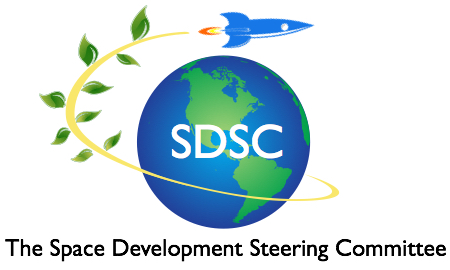An impressive team of government and industry mavericks has responded to the Secretary of Defense Ashton Carter’s Innovation Challenge for the Defense, Diplomacy, and Development (D3) Innovation Summit in December with a bold idea for “Carbon-Free Energy for Global Resilience and International Goodwill.” The carbon-free energy source the team proposes is solar power harvested in space and transmitted to earth, an energy source that in the long run could replace all fossil fuels and is an energy source.. Read More
We Can Afford Mars—But Not the Way We’re Doing It Now Says NASA Cost Analyst
There is a new Mars program—the Evolvable Mars Campaign—circulating secretly within NASA and it’s unaffordable, says the Space Development Steering Committee’s Gerald Black, an Apollo program rocket scientist and GE aircraft engine specialist. But Black is not alone. An aerospace specialist from deep within the bowels of NASA agrees. He agrees in his role as a private citizen, not as a spokesman for NASA. Here’s the story. In a press.. Read More
Space Settlement, an Easier Way
“Space Settlement an Easier Way,” Al Globus, Stephen Covey, and Daniel Faber describe a relatively easy, incremental path to free space settlement by taking advantage of very low radiation levels in Equatorial Low Earth Orbit (ELEO) and higher rotation rates. Low levels of radiation in ELEO permit settlements with little or no radiation shielding. Higher rotation rates permit much smaller settlements. Together this reduces settlement design mass by two to three.. Read More
The Small Satellite and Small Rocket Revolution
The price of access to space is coming down. Dramatically. SpaceX is working on making rockets reusable, a trick that will cut the cost of access to space for humans and large cargos by roughly 90%. But the price of getting into orbit is being slashed by yet another force: a miniaturization revolution. Today a satellite that weighs twenty five pounds—the weight of your backpack–can do the job of a.. Read More
The Reality of Getting to Mars — NASA’s Impossible “Evolvable Mars Campaign”
There are two ways to get Americans to Mars. One is the way we can afford. The other is the way we can’t. NASA, operating in secret, has been forced to choose the path that will break the bank—the path we simply can’t afford. NASA is circulating an internal document called “Evolvable Mars Campaign: Status Update to SLS Evolvability TIM.” The pages of the Evolvable Mars Campaign are clearly marked.. Read More
AE585 Seminar | Entry, Descent and Landing Technology Investments Designed to Enable a New Era of Mars Exploration
Dr. Robert D. Braun David and Andrew Lewis Professor of Space Technology Daniel Guggenheim School of Aerospace Engineering Georgia Institute of Technology Abstract: In the past twenty years, significant advances have been made in our ability to land scientific payloads on the Mars surface. These advances have come largely from continued evolution and refinement of Viking-era spaceflight technology. Over the past five years, a suite of new EDL technologies has been.. Read More
New Worlds 2015 Conference Oct 16-17
The Alliance for Space Development (ASD) is pleased to co-sponsor the October 16-17 New Worlds 2015 conference in Austin, TX. ASD Board Member Al Globus will be one of the speakers and will host the free-space settlement session. Members of ASD member organizations can get a 25% discount by using a promotional code: speakerglo15. This code is good for the first 150 applicants who use it. New Worlds 2015 will be a.. Read More
In simmering war over NASA’s commercial crew program, Congress strikes back
The quiet war between NASA and Congress continues over the space agency’s desire to fully fund its commercial crew program, which supports efforts by SpaceX and Boeing to develop crewed spacecraft. On Wednesday NASA announced that the first human mission of its Space Launch System rocket and Orion spacecraft, designed to go into deep space, could slip two years to 2023. Just 15 minutes after this news conference ended Lamar Smith, a Texas.. Read More
Free Lecture: NASA-Funded Economic Analysis of Establishing a Moon Base
Learn how leveraging commercial space partnerships could provide a 10X cost reduction for sending humans back to the Moon, and allow us to establish a permanent human base on the Moon within NASA’s existing budget. Charles Miller teaches a 10-week online course for current and future leaders of the commercial space industry. Watch the video here.
Japan Can Now Beam Solar Energy from Space
The inspired minds at Mitsubishi Heavy Industries have succeeded in transmitting solar energy right through the air. Using wireless power transmission may be the best way to gather solar energy from space in order to use it here on Earth. Using microwave technology, Mitsubishi said it sent ten kilowatts of power wirelessly through the air to a receiver positioned 1,640 feet away. That is enough to power your kitchen stove for an hour or more. On Friday,.. Read More
